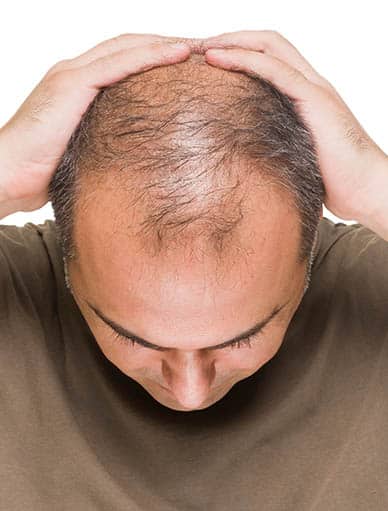Begin With Realistic Goals
Realistic goals and expectations are a result of a consultation with your surgeon. Only by discussing expectations and establishing an individualized treatment plan with your surgeon, can the best hair transplant outcomes be achieved. In order to ensure you achieve the greatest results from your procedure, it is important to establish that you are a good candidate for a hair transplant. Our patient advisors need to understand what your goals and expectations are, to ensure they are achievable by our surgeons and within your budget.
Realistic Expectations
Our patients who have realistic expectations and goals are overall more satisfied with their results. It is important to discuss your expectations with your surgeon; so, they may explain the different techniques and what procedure would fit your needs the best.
Healthy Hair & Scalp
No matter which technique is right for you, all hair replacement procedures use your own healthy, growing hair taken from where it is currently growing and transplant it to an area where you have hair loss. In order to move forward with having a hair replacement procedure, you must have “donor” hair that is available to be transplanted. The “donor area” is the location on your heard from which the healthy, growing hair can be harvested.
This means that if you are to have this procedure, you MUST have healthy hair on your scalp, that is available to be transplanted. The areas from which healthy hair will be harvested are referred to as “donor areas.” Your hair color, texture, and the degree of curl of your donor hairs all affect the outcome and appearance.
After your consultation and examination, your surgeon will determine the placement of your hair grafts in order to ensure the best result.
The Best Decision You Can Make
Hair transplant surgery has a high success rate. Hair replacement surgery may be the best decision you can make for your self-confidence. Our surgeon’s techniques safeguard that your result will look natural. The procedure is usually painless. Your new hair will gradually grow in and within a couple weeks of your procedure there will be no visible signs of surgery. You will no longer have to worry about covering your thinning hair or taking medication that doesn’t work.
Expecting The Best Hair Transplant
Realistic goals and expectations are a result of a consultation with your surgeon. Only by discussing expectations and establishing an individualized treatment plan with your surgeon, can the best hair transplant outcomes be achieved.
Limitations in Hair Restoration
A surgeon’s experience, skill, and artistry cannot overcome the limitations in the quality or quantity of your donor hair. All hair restoration procedures, including FUT hair transplants and FUE hair transplants, move hair from the “donor area” and placed on the area for desired growth. New hair is not created, but rather redistributed from the back and sides of the head to areas where there is little or no hair. Every hair follicle lost due to genetic balding, (androgenic alopecia) is lost forever. The more hair you have already lost, the less full the appearance of the restored hair. Traditional large (4 mm) hair transplant grafts simply transfer plugs of hair to bald areas, creating patches of hairy skin that result in creating the “doll’s head” look that has been commonly associated with hair transplants.

Modern Hair Transplantation
For the best results, small, naturally growing groups of hair follicles from your donor area will be transplanted by your surgeon. These follicular grafts are small, less noticeable than larger grafts, making it difficult to distinguish them from natural growing hair in other parts of the scalp. The incisions used to place these grafts are so minute, there will be no noticeable scar. However, the density of existing hair will be more significant than the density of transplanted hair. In the thinning areas, follicular grafts will be added in to existing hairs, therefore increasing the apparent density. The key is to add density unobtrusively so the hair in the new location appears as full and natural as possible.
It is critical to understand and manage expectations before making a decision to schedule surgery. In some cases, there will not be enough hair to retrieve from the donor area to cover your entire head. The only viable options for hair restoration would be to move forward with a very thin head of hair, a conservative, high hairline and/or deliberately selecting to leave the crown area un-grafted.
Extensive Hair Loss
There is no way that transplantation can achieve a full head of hair in patients with extensive hair loss and low-density donor hair. Artistic techniques can be used to maximize what donor hair is available to create the best hair transplant outcome. For example, a high hairline that does not have a distinct edge can produce a natural, but well-framed, thin look. It is important to recognize that high contrast hair-to-skin color combinations make more advanced hair loss harder to restore.
As a part of managing expectations and setting realistic goals, clients have a responsibility to educate themselves on hair replacement procedures. It is important to work with your surgeon to understand their historical experiences, ask questions, review any materials provided during your consultation and seek out clarification as needed. Satisfied clients are more educated on the process because they have a full understanding of the procedure and are better equipped to manage expectations based on all aspects of the surgery.
Educated clients can more easily distinguish between gimmick and truth in advertising and have the ability to separate wishful thinking from realistic expectations. When a client is educated and seeks out information, the client can be satisfied with their results, understanding that the surgeon produced the desired outcome
